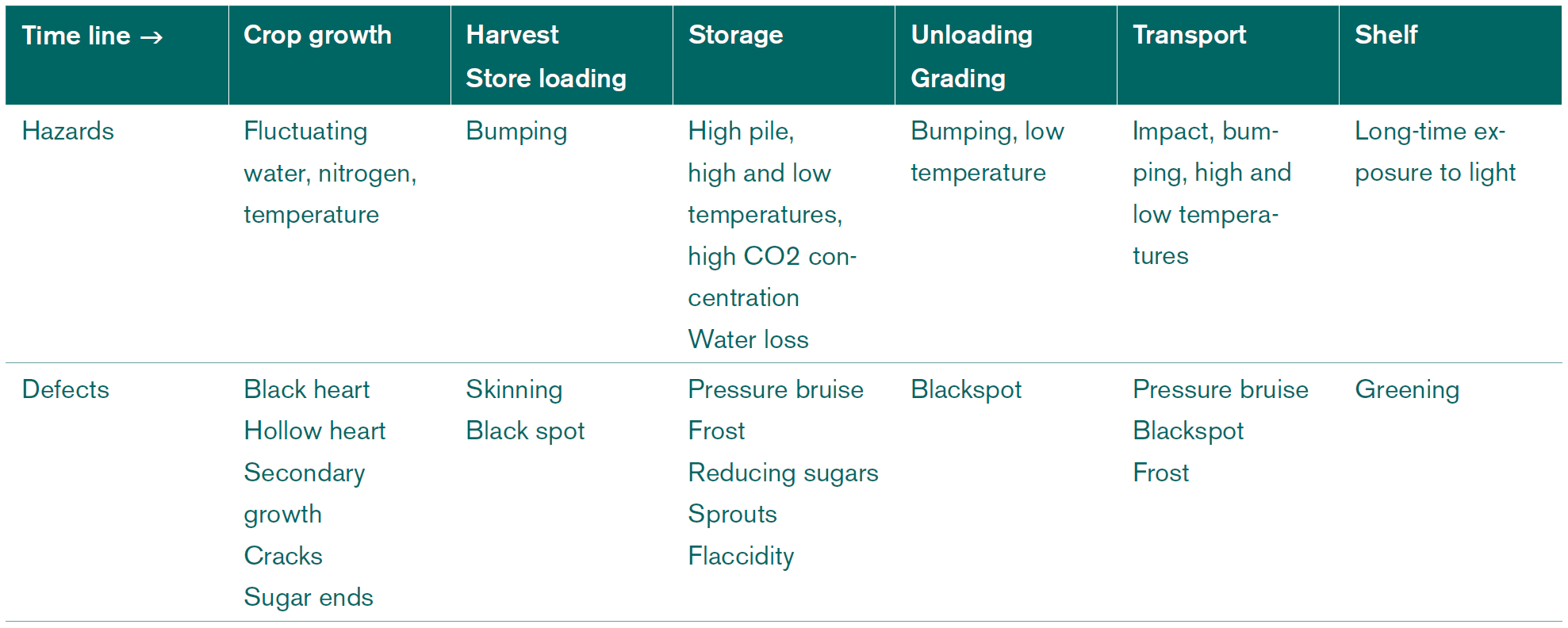Besides infection by pests and diseases, potato is also prone to many disorders of non-pathogenic origin. Such non-pathogenic origins are of an abiotic physiological nature resulting from interaction between the physiology of the growing tuber and its environment. They are generally referred to as physiological disorders.
Contrary to diseases, they are not infectious and since they are not associated with a pathogen, there is not always a simple procedure to identify the cause of a disorder.
Environmental factors
The environmental causal factors of the disorders are all factors that influence growth, such as temperature, water, minerals and soil conditions. Some of them can be avoided, such as taking care that no damage occurs during the operations in the field and post-harvest. These are hilling, hoeing, driving through the fields for spraying, at harvest and handling for store loading, unloading grading and packing. Some can hardly be avoided such as flooding, heat waves and frost. Disorders cause heavy losses of crops, occasionally leading to complete loss due to asphyxiation following excessive rain and flooding.
External defects and internal disorders
Disorders can be divided into defects that can be seen from the outside so called external defects and those that can only be observed when the tuber is peeled or cut, i.e. internal disorders. They occur during growth, harvest, storage handling and during the shelf life of the tubers in the shop.

Types of tuber disorders, their hazards and time during the life of the tuber.
Want to keep reading about the potato crop and tuber disorders?
Our Potato handbook is a global potato university in 1 book!
Buy your copy today and get a one-year free subscription to PotatoWorld magazine.

